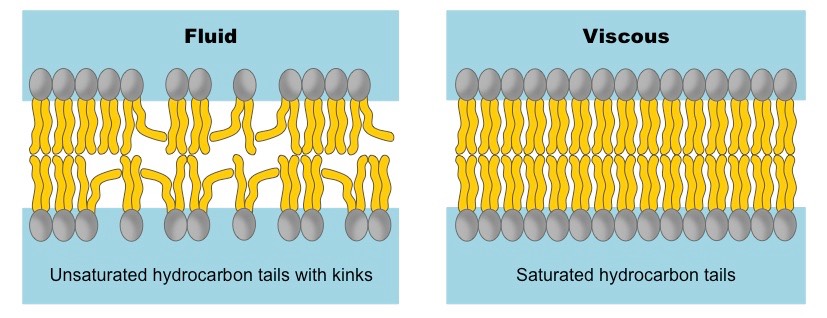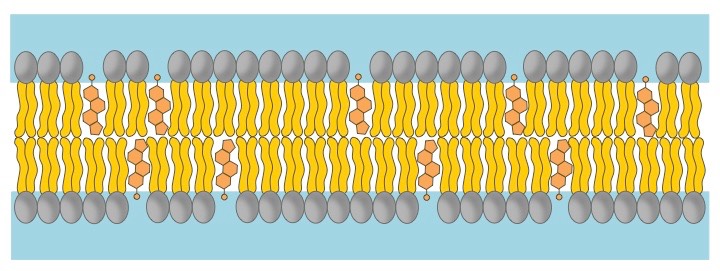Cell membranes are fluid, meaning they are not fixed in position and can adopt amorphous shapes
Membrane fluidity is enhanced at higher temperatures and is also affected by the composition of the bilayer
Phospholipid Structure
Phospholipids may vary in the length and relative saturation of the fatty acid tails
- Shorter fatty acid tails will increase fluidity as they are less viscous and more susceptible to changes in kinetic energy
- Lipid chains with double bonds (unsaturated fatty acids) have kinked hydrocarbon tails that are harder to pack together

Cholesterol
Cholesterol acts as a bi-directional regulator of membrane fluidity
- At high temperatures it stabilises the membrane and raises the melting point
- At low temperatures it intercalates between the phospholipids and prevents clustering

